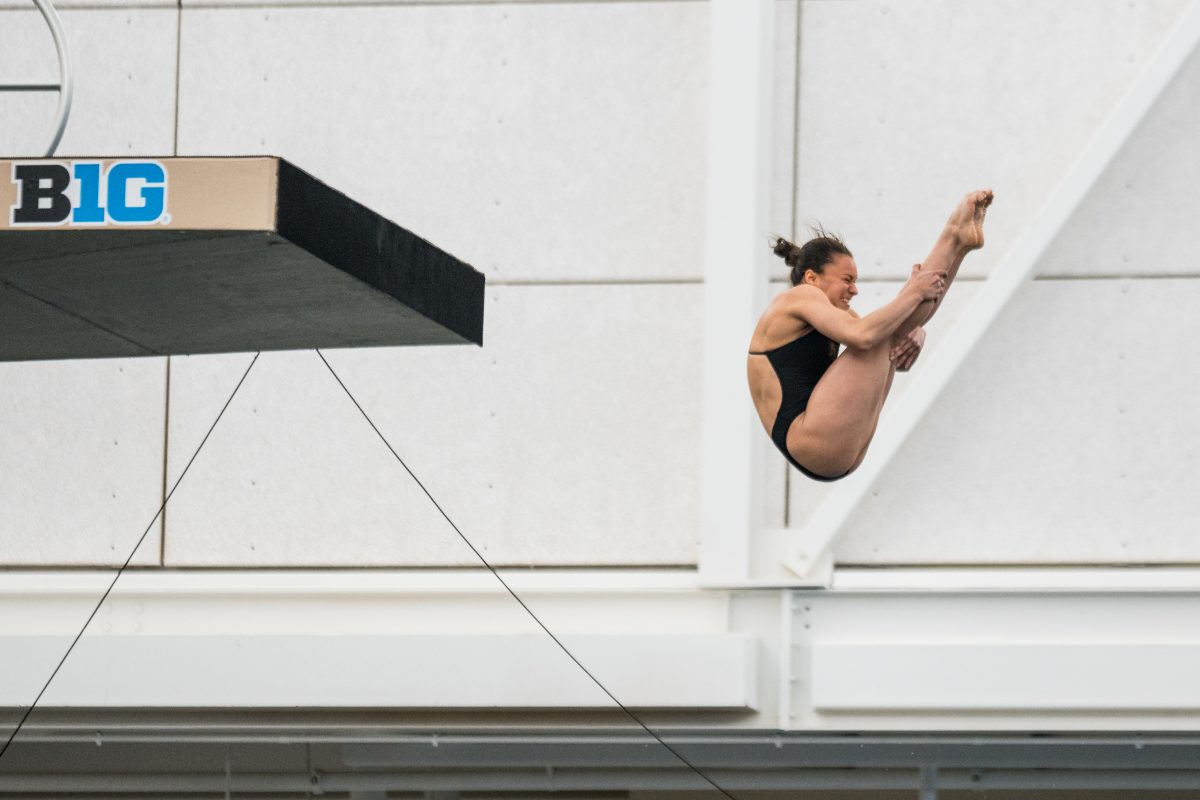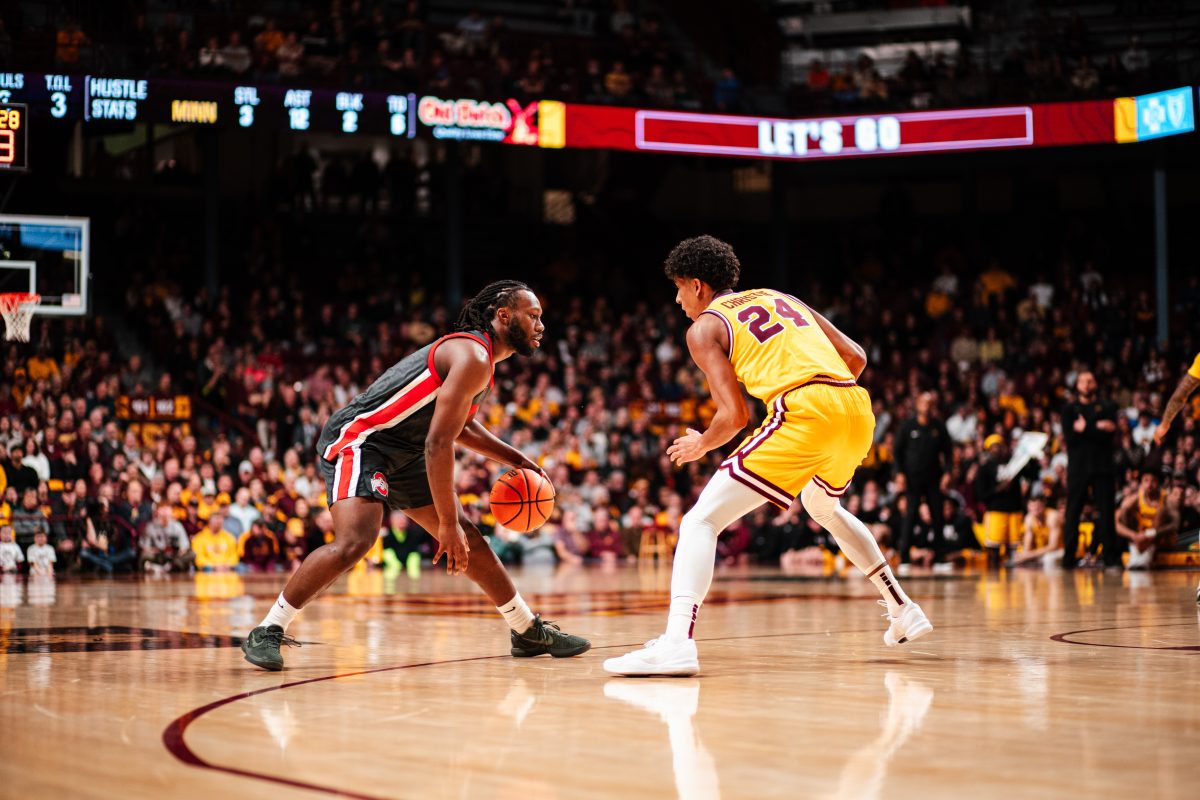Minnesota men’s gymnastics coach Mike Burns describes Title IX as a fence.
Especially after the 1975 amendment that expanded the law to include athletics programs, advocates of the law and those who would like to see changes have been battling one another from their respective sides of that fence ever since.
The latest call for a turf war: an additional clarification posted on the Web site of the U.S. Department of Education’s Office of Civil Rights on March 17.
The clarification offers a model survey that schools can use to comply with the Office of Civil Rights’ three-part compliance test’s third part, which requires schools to “fully and effectively accommodate the interests and abilities of the underrepresented sex.” Schools must comply with one of Title IX’s three parts.
The e-mail survey would be sent to the entire undergraduate student body to measure its interest in participating in varsity sports.
If results show “insufficient interest to support an additional varsity team for the underrepresented sex,” it will presume compliance. If a student didn’t respond to the survey, that would be considered a lack of interest as well. The underrepresented sex is almost always women.
But Athletics Director Joel Maturi said the surveys won’t be used at Minnesota because the school doesn’t have the money for more teams and already complies with Title IX using part one, in which “the percentage of male and female athletes is substantially proportionate to the percentage of male and female students enrolled.”
“I don’t think it’s the right way to add or not add sports,” Maturi said. “So I don’t want to go that route. We believe proportionality is the best way to comply, and we don’t plan to change.”
But nevertheless, it’s a move that has drawn praise and criticism from opposite sides of the fence at Minnesota.
“How many of us get e-mails, especially with an attachment for a survey, and actually do it?” said Mary Jo Kane, director of the University’s Tucker Center for Research on Girls & Women in Sport and a vocal advocate of Title IX. “Does that mean I’m not interested in the sport if I don’t return the survey?”
Minnesota wrestling coach J Robinson would say “yes.”
“If you e-mailed someone and they didn’t respond to a survey that you wanted to do, what would you say?” Robinson said. “You would say, ‘Geez, they’re not interested.’ “
Robinson said doing the survey would say what most people already know – that the interest from women isn’t there.
But Kane said the survey would show results that might not please Robinson.
She said the surveys would show a lack of interest in wrestling compared with other men’s sports, essentially sending the sport further down the totem pole.
“What if there are more men interested in volleyball or soccer?” Kane said. “You have to be careful what you wish for.”
Burns and men’s golf coach Brad James both said they wish for many of the same things as Robinson, mainly changes in proportionality requirements.
But unlike Robinson, they also have problems with the survey. James said he disliked the nonresponse meaning noninterest aspect but declined to elaborate, saying he didn’t want to get caught up in the Title IX debate.
Burns said he supported using the surveys, with his only objection being the nonresponse aspect.
“It has inherent flaws, maybe,” Burns said. “But it’s given another opportunity to garner some information on a pretty hot-potato issue.”
Rowing coach Wendy Davis shared Burns’ point of view on the surveys, calling the nonresponse aspect “just silly,” but otherwise saying that if Minnesota is really trying to gauge interest, it’s at least a way to do it.
But Kane had more objections. She said the study didn’t define clearly enough what “interest” was and that it won’t take into account young women who would have expressed interest but chose other schools because Minnesota didn’t offer the sport. She said the Office of Civil Rights should have clarified part two instead of part three, thereby pushing the burden of proof onto the schools rather than women.
Part two says schools are in compliance if they show a history of expanding opportunities for the underrepresented sex.
“It’s the only time in the history of our country we’ve said to a minority party that they have to establish interest beforehand,” Kane said. “Before we gave black people the right to vote, did we say they had to fill out an interest survey first?”
Kane said she’s not opposed to using some sort of survey to measure interest, as long as it’s done in a truly equitable manner.
Assessing interest is exactly what James, Burns and Robinson would like Maturi to do, rather than base compliance on proportionality. They argue that there are proportionately more men interested in playing sports than women and that the proportionality requirements should be adjusted accordingly.
“I think women are interested in sports, but I think men are more interested,” Burns said. “Kind of maybe one of those inherent things, I don’t know.”
Robinson said women are more numerous than men in most other extracurricular activities, such as glee club, student government and orchestra, and asked why that didn’t have to be proportional.
Robinson gave another example of where he believes proportionality hurts programs, and not just men’s. He criticized Minnesota’s attempt three years ago to eliminate the small women’s golf team – a sport with 270 high school programs in the state – to keep the rowing program.
“There’s not one rowing program in the state,” Robinson said. “So why? Because it all goes down to numbers.”
Gophers men’s teams aren’t the only ones that would like to see the survey option looked at.
Though men’s rowing club president Sean McNulte said his club would probably not be interested in using the survey to gain varsity status because it enjoys the club team “culture,” men’s soccer president Nick DeMeuse said he would love to put in the work to make it happen.
“Soccer is one of the fastest-growing sports in the U.S.,” DeMeuse said. “It makes sense that Minnesota would have a varsity team. I don’t see why Title IX should get in the way of that.”
Maturi said the team could ask for the school to send out a survey, but that it wouldn’t have to because it already complies with part one of Title IX.
“I would like to believe that, someday, we’ll have men’s soccer,” Maturi said. “But we’re financially challenged right now with 25 sports.”
Kane said she believes the clarification has only made things more complicated and that the issue will end up back in court.
But no matter where it goes, what matters most to Burns is that it goes where it was intended.
“We want to make sure it’s doing what it was originally designed to do – not discriminate based on gender,” he said.
















